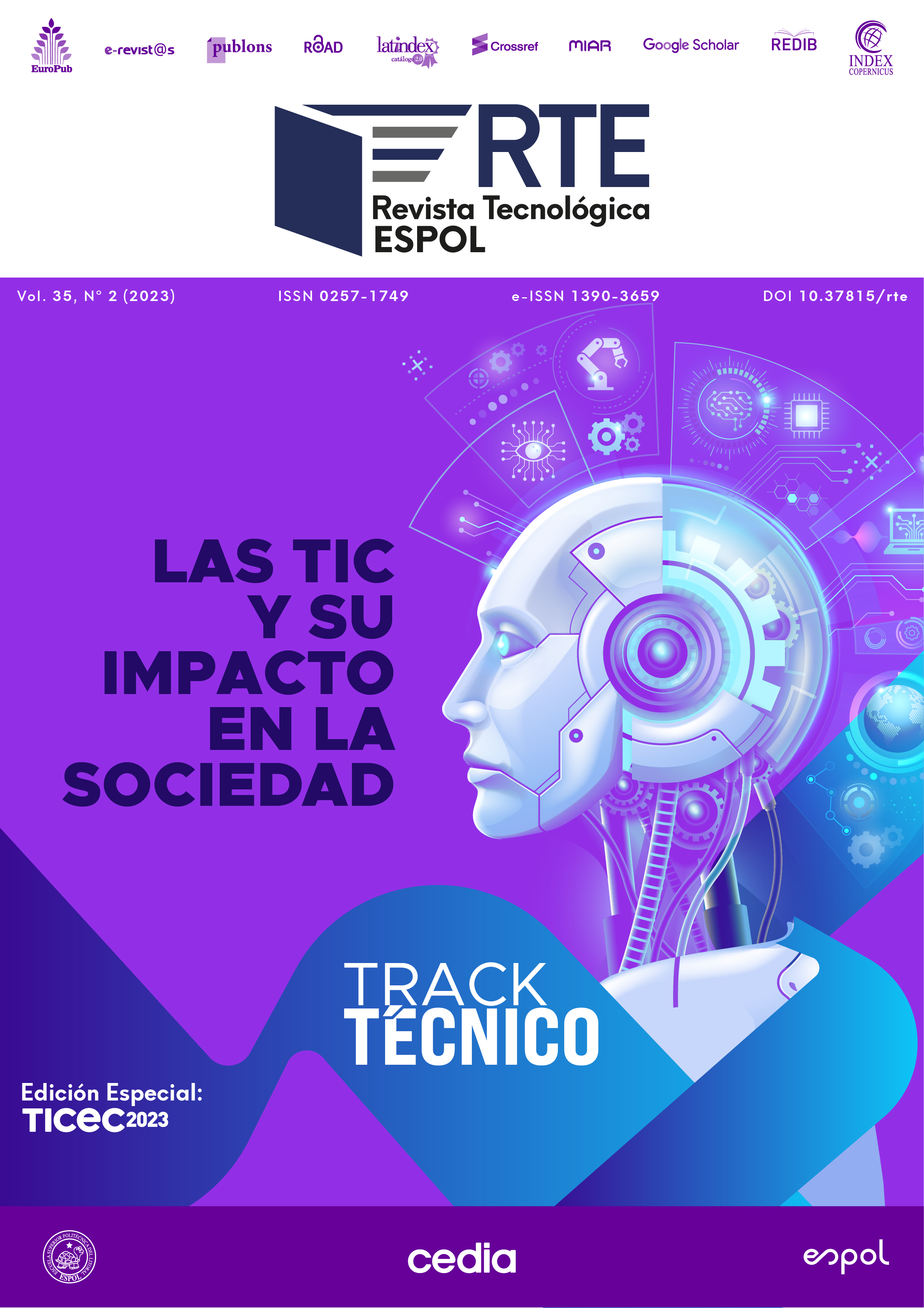The existing literature identifies various situations related to hearing problems in children, such as difficulties in understanding oral language, delayed speech development, or auditory discrimination problems. In this work, we present a technological tool designed to stimulate listening skills in children from 5 to 7 years old, following the principles of Condemarin. This tool offers stimulation activities and provides immediate feedback to improve the ability to recognize, discriminate, and interpret auditory stimuli, which contributes to the development of communication skills in children. The tool we developed is a web application that is easy for therapists to install, learn, and configure. For its creation, we follow the prototype methodology, which includes the requirements, assembly, evaluation, corrections, documentation, and testing stages. We collaborate with a multidisciplinary team of experts in information technology, linguistic rehabilitation, education, and graphic design. Throughout the six phases of our process, we kept user needs in mind, resulting in a system evaluation that demonstrated high user satisfaction and good performance both in technical and interface terms. In addition, this application benefits children with language disorders and learning difficulties and children from 5 to 7 years old since it encourages the development of their communication skills.

This work is licensed under a Creative Commons Attribution-NonCommercial 4.0 International License.
References
Acosta, G., Cajiao, M., & Arias, A. (2020). Post-agreement and Deaf Diversity: He narrated the conflict in Colombian Sign Language (LSC). Inclusion of cultural and social diversity in education. Center for Latin American Studies on Inclusive Education (CELEI).
Amado-Salvatierra, HR, Quan Lainfiesta, LR, & Hernández Rizzardini, R. (2015). Methodological guide for the creation of accessible virtual curricular developments. Angewandte Chemie International Edition, 6 (11), 951-952.
Aristegui, JL (2010). Test Cases in Software Testing. Lampsakos, 3, 27. https://doi.org/10.21501/21454086.785
Armenta Benitez, LÓPEZ, Samue, RODRIGUEZ-ESPINOZA, I., & MEDINA-MUÑOZ, L. (2018). Application of the Prototyping Model: Case Study RedbotGamesShop Software. 2 (5 8-13).
Bangor, A. (2009). Determining What Individual HIS Scores Mean: Adding an Adjective Rating Scale. 4 (3).
Buitrago, JA, Andrade, CC, & Bravo, EC (2019). A new technological therapy device for children with learning disorders. Proceedings of the 5th Workshop on ICTs for Improving Patients Rehabilitation Research Techniques, 1-4. https://doi.org/10.1145/3364138.3364140
Catania, F., Spitale, M., & Garzotto, F. (2022). Conversational Agents in Therapeutic Interventions for Neurodevelopmental Disorders: A Survey. ACM Computer. Surv. https://doi.org/10.1145/3564269
Cedillo Orellana, IP (2017). Monitoring the quality of cloud services through runtime models [Universitat Politècnica de València]. https://doi.org/10.4995/Thesis/10251/78032
Cheung, L. (2016). Using the ADDIE Model of Instructional Design to Teach Chest Radiograph Interpretation. Journal of Biomedical Education, 2016, 1-6. https://doi.org/10.1155/2016/9502572
Condemarin, M., Gorostegui, M., Chadwick, M., & Milicic, N. (2016) . Madurez Escolar. Editorial Ediciones UC. Chile.
Gačnik, M., Starčič, AI, Zaletelj, J., & Zajc, M. (2018). User-centred app design for speech sound disorders interventions with tablet computers. Universal Access in the Information Society, 17 (4), 821-832. https://doi.org/10.1007/s10209-017-0545-9
Gerosa, M., Giuliani, D., Narayanan, S., & Potamianos, A. (2009). A review of ASR technologies for children's speech. Proceedings of the 2nd Workshop on Child, Computer and Interaction - WOCCI '09, 1-8. https://doi.org/10.1145/1640377.1640384
Glykas, M., & Chytas, P. (2004). Technology assisted speech and language therapy. International Journal of Medical Informatics, 73 (6), 529-541. https://doi.org/10.1016/j.ijmedinf.2004.03.005
Griffiths, J., Johnson, F. & Hartley, R. (2007). User satisfaction as a measure of system performance. Journal of Librarianship and Information Science. https://doi.org/10.1177/0961000607080417
Isaías, A., & Campra, M. (2021). Phonoaudiology: Possible Interventions and Practices.
Lavoie, M., Bier, N., Laforce, R., & Macoir, J. (2020). Improvement in functional vocabulary and generalization to conversation following a self-administered treatment using a smart tablet in primary progressive aphasia. Neuropsychological Rehabilitation, 30 (7), 1224-1254. https://doi.org/10.1080/09602011.2019.1570943
Lehman, J.F. (1998). Toward the Use of Speech and Natural Language Technology in Intervention for a Language-disordered Population. 8.
Lo, H.-C., Tang, S.-T., Wei, W.-L., & Chuang, C.-C. (2017). Design and Usability Evaluation of Speech Rehabilitation APP Interface for Patients with Parkinson's Disease. In M. Antona & C. Stephanidis (Eds.), Universal Access in Human–Computer Interaction. Human and Technological Environments (Vol. 10279, pp. 65-75). Springer International Publishing. https://doi.org/10.1007/978-3-319-58700-4_6
Madeira, RN, Mestre, V., & Ferreirinha, T. (2017). Phonological Disorders in Children? Design and user experience evaluation of a mobile serious game approach. Proceeds Computer Science, 113, 416-421. https://doi.org/10.1016/j.procs.2017.08.359
Morales-Acosta, G. (2020). Human Communication: Construction of an Intercultural Phonoaudiology in the Dimensions of Social and Cultural Interaction. Inclusions Magazine, 264-281.
Pierrakeas, C., Georgopoulos, VC, & Malandraki, GA (2005). Online Collaboration Environments in Telemedicine Applications of Speech Therapy. 2005 IEEE Engineering in Medicine and Biology 27th Annual Conference, 2183-2186. https://doi.org/10.1109/IEMBS.2005.1616895
Sasmito, GW, & Nishom, M. (2020). Testing the Population Administration Website Application Using the Black Box Testing Boundary Value Analysis Method. 2020 IEEE Conference on Open Systems (ICOS), 48-52. https://doi.org/10.1109/ICOS50156.2020.9293645
Spitale, M., Silleresi, S., Leonardi, G., Arosio, F., Giustolisi, B., Guasti, MT, & Garzotto, F. (2021). Design Patterns of Technology-based Therapeutic Activities for Children with Language Impairments: A Psycholinguistic-Driven Approach. Extended Abstracts of the 2021 CHI Conference on Human Factors in Computing Systems, 1-7. https://doi.org/10.1145/3411763.3451775
Toki, EI, Pange, J., & Mikropoulos, TA (2012). An Online Expert System for Diagnostic Assessment Procedures on Young Children's Oral Speech and Language. Proceeds Computer Science, 14, 428-437. https://doi.org/10.1016/j.procs.2012.10.049
Walden, PR (2021). Learning Acoustic Assessment of Voice: An Action Research-Based SoTL Project. Journal of Voice, S0892199721004057. https://doi.org/10.1016/j.jvoice.2021.11.015







